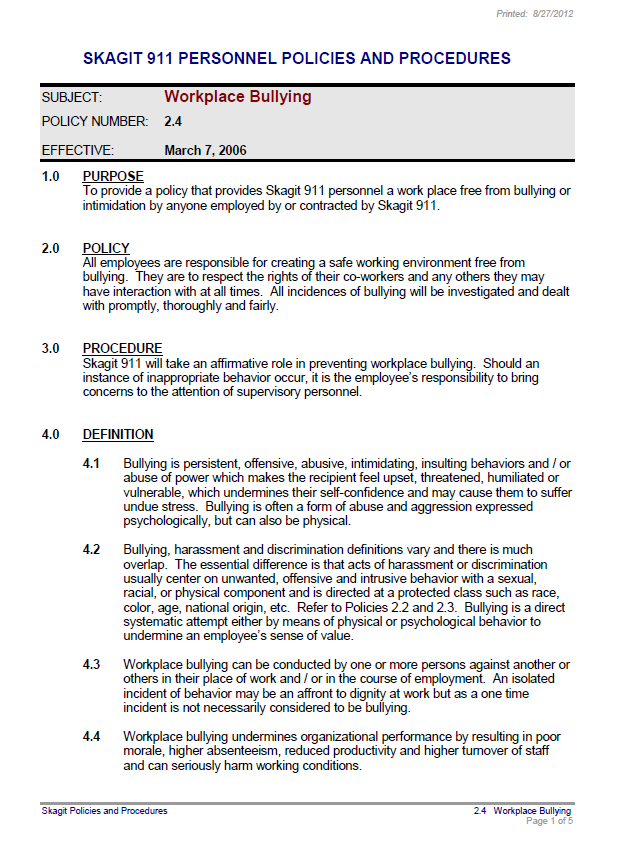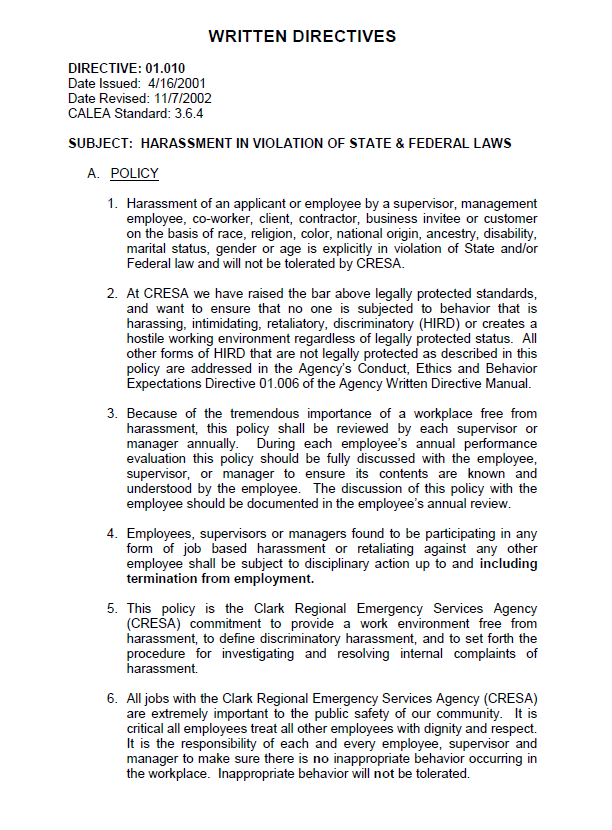How to Stop Bullying
Normal conflict resolution procedures don't usually work with bullying. Bullies have more power than their victims, so they don't have an incentive to compromise or work toward a win-win solution. Victims should not be expected to confront their bullies, “stand up for themselves,”or “work things out.” This is a time for management to get involved and use disciplinary consequences to create a safe work environment for everyone.
A zero-tolerance policy is the best tool for preventing bullying.8 A bullying policy serves two purposes:
- Education: a bullying policy helps to create an “anti-bullying culture” and deter bullying before it starts.
- Response: a bullying policy provides a blueprint for identifying bullying and taking action to hold bullies accountable.
Steps Toward a Policy

1.
Get everyone involved. The most effective anti-bullying efforts involve individuals from all levels of the organization and include input from as many coworkers as possible.

2.
Define bullying in writing. There is a lot of pressure to “let it go” and not make a big deal of bullying incidents. A clear definition of what counts as bullying can get everyone on the same page.

3.
Develop reporting procedures. Educate staff about what to do if bullying occurs. Victims, as well as other employees who witness bullying, should know where to turn for help.

4.
Define responses to bullying. Consequences may include performance plans for bullies and monitoring to ensure that behavior changes are effective.

5.
Revisit the policy over time. Get input from staff at defined periods after implemention and make adjustments as necessary.
Communicating the Policy
Your anti-bullying policy is a powerful training tool. You can use it to help employees understand:
- Acceptable workplace behavior, including use of social media
- Awareness of the impact bullying has on others
- How to report bullying and what will happen once a report is made
- Where to go for more information and assistance
Training resources can also help you communicate policies around bullying. Consider incorporating anti-bullying education into onboarding for new staff members or into professional development training for current staff members.


